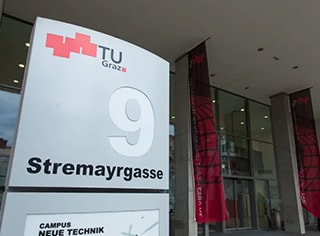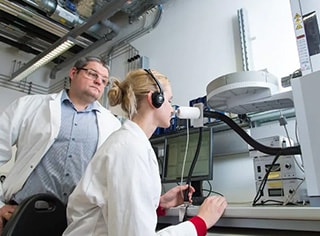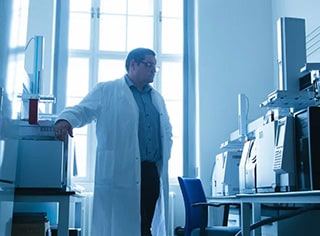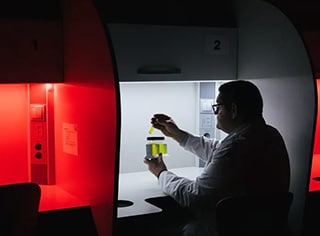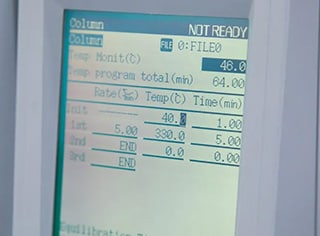Pursuing food quality with global partnership

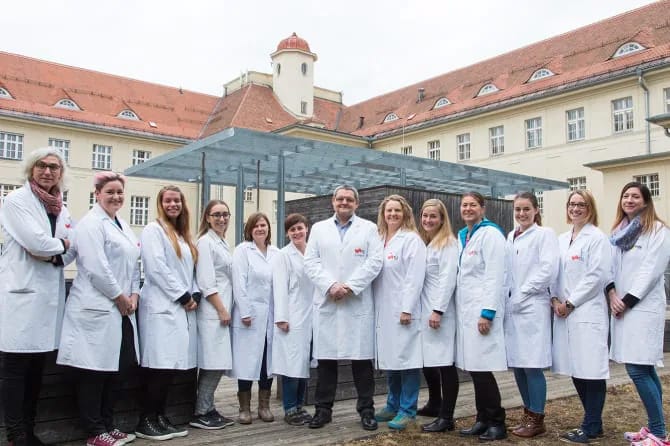
Series: MOMENTUM
For nearly 150 years, the Shimadzu Corporation has been “contributing to society through science and technology” by building analytical and measuring instruments. As part of this endeavor, Shimadzu has established Shimadzu Innovation Centers (SICs) in China, Singapore, the United States, and Europe. The European Innovation Center (EIC) works with leading academic institutions to translate university innovation into large-scale scientific solutions. Here we highlight a project between EIC and an academic institution that will advance food quality.

Food safety standards
Professor Erich Leitner is a leading expert on food quality at the Graz University of Technology in Austria. He is a major node in the local food network, having strong relations with local food producers and farmers in the region. Leitner has been using Shimadzu chromatographs and mass spectrometers for over a decade to study food. To him, scents and chromatograms are the same. “When I smell a substance, I can see the structure of the molecules,” he says.
However, Leitner takes as strong an interest in the packaging food comes in as the food itself. Companies invest an enormous amount of time and money to insure their foods have the right food chemistry for the best flavor. All that effort can be lost, however, by the food packaging. Be it pasta in paper boxes, sugar in plastic bags, or chocolate in foil wrapping, the quality of all foods is vulnerable to molecules leaking from the packaging. Preservation can be an extremely challenging problem when considering that some foods are kept in their packaging for months or even years. Contamination can sometimes be recognized by a change in taste or aroma, but not all contaminants can be detected by our senses. That is the case for mineral oil saturated hydrocarbons (MOSH) and mineral oil aromatic hydrocarbons (MOAH). MOSH is known to accumulate in the body, and MOAH is associated with potentially carcinogenic substances (Weber et al., 2018).
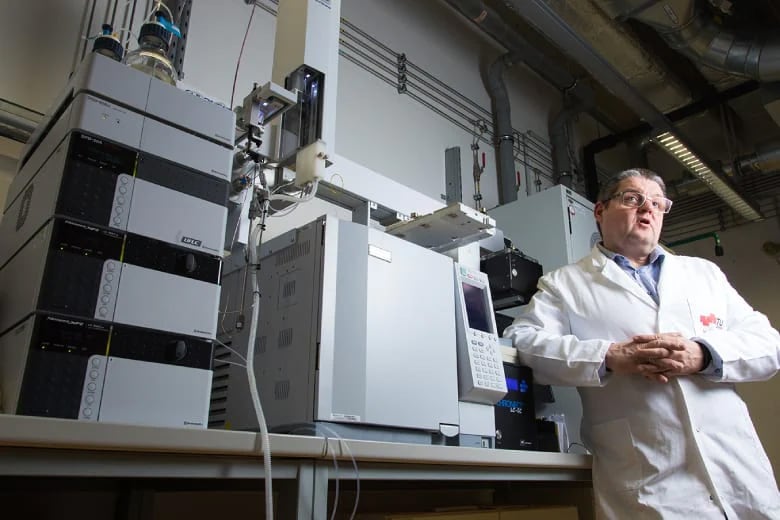
Erich Leitner with the MOSH/MOAH analysis system
This year or next, the European Commission is expected to set strict guidelines on the amount of MOSH and MOAH acceptable in foods. What has delayed these guidelines is the lack of standardized methods. Besides contributing to food safety, such a method would assist in troubleshooting which stage in the manufacturing the contamination occurs.
“We monitor from the raw product to the final product. The more you process a food, the higher the risk of contamination,” Leitner explains.
Loyal partnerships
EIC and Leitner have teamed together to solve this problem. Shimadzu is building automated chromatography and mass spectrometry systems that reduce the amount of human handling and thus errors by the experimenter, while Leitner is bringing his expertise on sample preparation and analysis protocols to optimize the instruments. The automated system allows Leitner to test 50 samples per day. In comparison, previous methods could require as long as two days to test some samples. When daily production is measured in tons, any reduction in time can translate into huge savings.
Leitner has been working with Shimadzu so long and on so many projects that he cannot remember who first proposed the MOSH/MOAH study. Either way, there was little doubt he would join.
“Many people think they can do analytical measurements by buying equipment. But that’s half the story. You need good people,” he says.
Leitner has been convinced those people are at Shimadzu ever since they loaned him two engineers for days to configure his first Shimadzu instrument.
“I was able to test the instrument (multi-dimensional gas chromatography mass spectrometry system with additional sniffing port) exclusively for two days with two experts. I was impressed by the performance and the customer service.”
Working with EIC has allowed Leitner to explore the problems that most interest and inspire him, namely, food quality. “I’m absolutely crazy about quality,” he says. “I’m one of the luckiest people in the world. My job is my hobby."
* The information including affiliates and titles of the persons in this article are current as of the time of interviewing (December 2018).
Reference
Weber, S., Schrag, K., Mildau, G., Kuballa, T., Walch, S. G. and Lachenmeier, D. W. (2018). Analytical Methods for the Determination of Mineral Oil Saturated Hydrocarbons (MOSH) and Mineral Oil Aromatic Hydrocarbons (MOAH)-A Short Review. Anal Chem Insights 13, 1177390118777757.
 Copied
Copied


